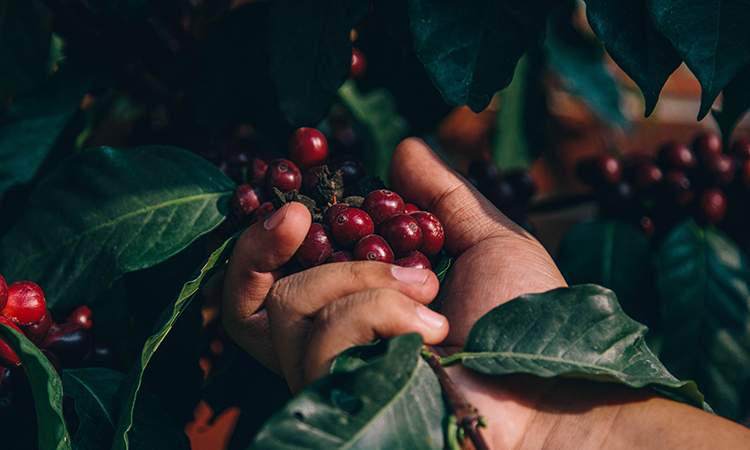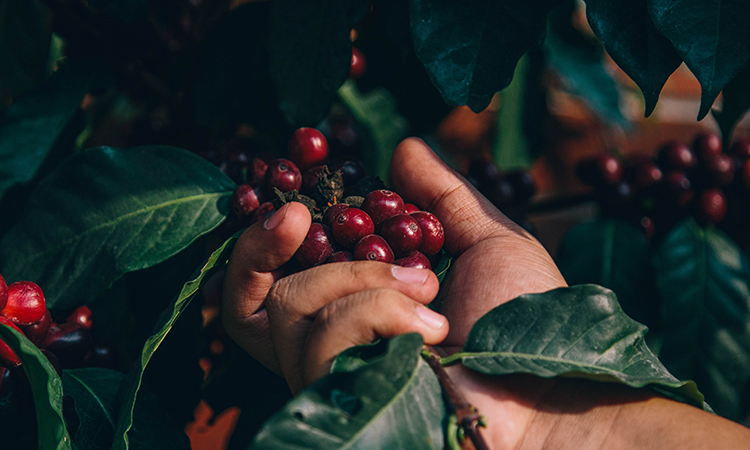New study explores potential for climate-smart coffee

In the face of decreasing Arabica production due to the impact of climate change, researchers are exploring potential alternative coffee cultivars that thrive in other climates.


Globally, consumers drink more than 2.2 billion cups of coffee a day, with more than 100 million farmers worldwide responsible for producing the beans.
Coffee beans consumed across the globe come from two species: Coffea arabica and Coffea canephora, also known as Robusta (or Conilon) coffee. Historically, consumers prefer Arabica beans for their specific flavour and aroma, said Felipe Ferrao, a University of Florida (UF) research assistant scientist in horticultural sciences.
But, by 2050, about 80% of Arabica production is predicted to decrease as a result of climate change. In response to this, Ferrao and colleagues from France (RD2 Vision) and Brazil (Incaper Institution) are investigating potential alternative cultivars.
Scientists see two reasonable solutions to supplement Arabica: adapt farming practices to new environments and focus on species that are more resilient. New University of Florida’s Institute Of Food And Agricultural Sciences (UF/IFAS) led research shows that Robusta coffee has the potential to be a good candidate to augment Arabica.
“If you consider that, nowadays, about 60% of coffee beans commercialised around the globe are from Coffee arabica, the industry is looking for alternatives,” said Ferrao, lead author of the new study. “This is how and where Robusta emerges as a good candidate.”
In the past few decades, production of Robusta has increased by approximately 30%, representing a significant improvement in the coffee chain, he said.
“Overall, the species produces more coffee than Arabica whilst using fewer inputs, such as fertiliser and water. As its name suggests, the plant is more robust,” Ferrao said. “While the demand for Robusta likely won’t decrease, our biggest challenge is to meet the demand for quality and productivity required by the coffee chain. In this sense, genetics and breeding studies can provide basic elements for a better understanding of diversity and factors that affect quality.”
For the study, Ferrao and his colleagues evaluated Robusta/Conilon and Arabica for multiple traits in three locations in high altitudes in Brazil, over the course of five years. Ultimately, they wanted to find out whether the Robusta cultivars could have a good yield when produced in alternative climates and whether they tasted good.
The study showed Robusta is highly adaptable and grows in high altitude regions, which means that it combines good production and flavour scores.
“Robusta is flexible because it has a large diversity and, therefore, different plants can be selected, depending on the weather conditions,” Ferrao said. “With that said, we can shed some light on the fundamental question about the coffee of the future – climate-smart coffee.”
Researchers suggest that Robusta can combine the following three elements for coffee cultivars:
- Sustainability: produce more with fewer inputs
- Quality: good flavour to meet consumer demand
- Plasticity: capacity to adapt to new production systems.
Now that they’ve experienced good results with Robusta in Brazil, scientists are trying to see if it can also grow in Florida.
“Here in Florida, we have some trials to test both Robusta and Arabica coffees in different locations. When compared to Brazil, the differences in the soil properties, rainfall distribution, temperature and weather events will certainly impact the coffee production and its quality,” Ferrao said.
To test coffee as an alternative crop for Florida growers, Ferrao and his UF/IFAS team are trying to grow coffee at the Tropical Research and Education Center (TREC) in Homestead. At TREC, Ferrao is working with Jonathan Crane, professor and associate center director, and Ali Sarkhosh, associate professor, who’s based in Gainesville. Both are colleagues in the horticultural sciences department.
Ferrao is also trying to grow coffee in Pierson (in Volusia County) and with indoor production using high-tunnel structures in North Florida, marking the first time they’ve tested such a diverse set of coffee materials in Florida conditions.
Source: newfoodmagazine.com

